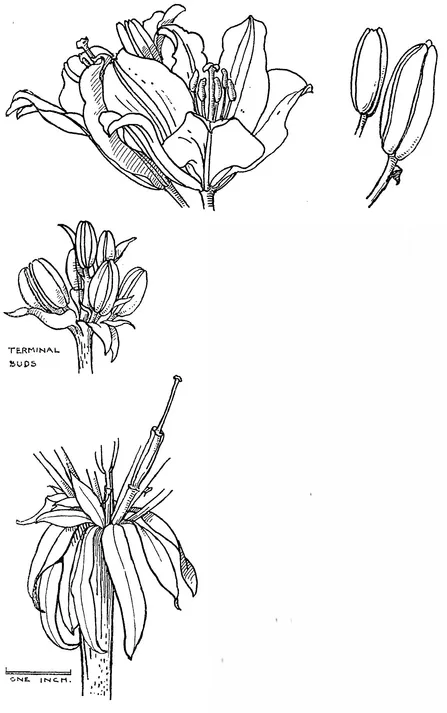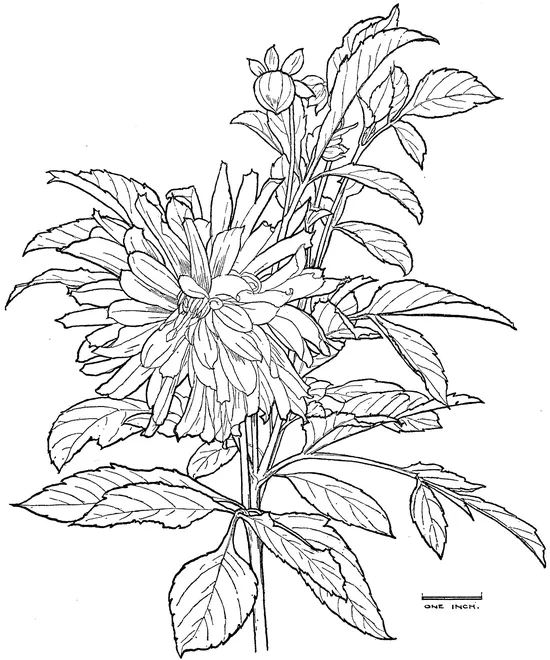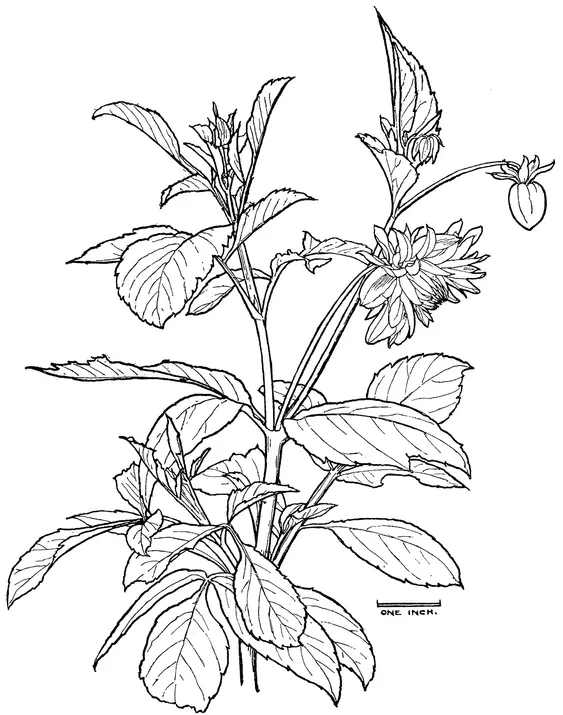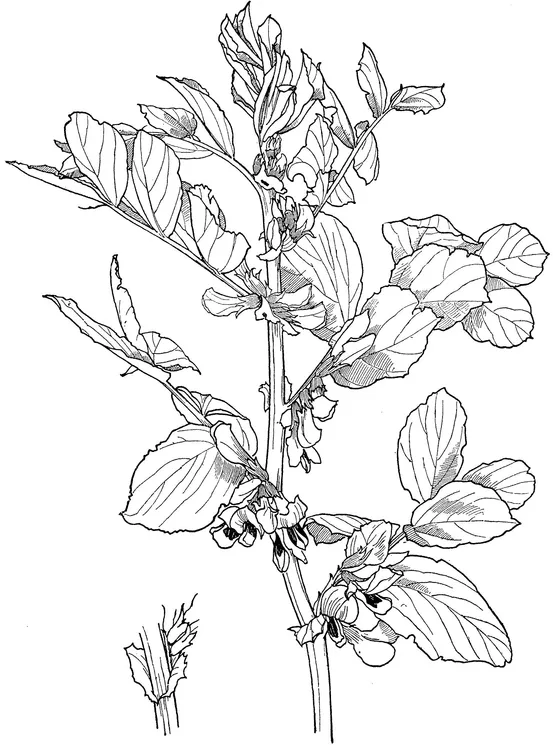
- 160 pages
- English
- ePUB (mobile friendly)
- Available on iOS & Android
eBook - ePub
Plant and Floral Studies for Artists and Craftspeople
About this book
Remarkably broad in its applications, this helpful reference covers a wide variety of plants. More than 100 precise drawings of flowers, leaves, buds, and growth patterns are provided for such plants as the anemone, arbutus, broad bean, bell-flower, briar rose, campanula, canterbury bell, dahlia, and lily; a detailed narrative provides descriptions of physical features and general botanical information for each plant.
Invaluable for making stencils, needlework canvases, and other floral design projects, this thoroughly illustrated, comprehensive guide will be a boon to amateur and professional artists, art students, and crafters.
Invaluable for making stencils, needlework canvases, and other floral design projects, this thoroughly illustrated, comprehensive guide will be a boon to amateur and professional artists, art students, and crafters.
Frequently asked questions
Yes, you can cancel anytime from the Subscription tab in your account settings on the Perlego website. Your subscription will stay active until the end of your current billing period. Learn how to cancel your subscription.
No, books cannot be downloaded as external files, such as PDFs, for use outside of Perlego. However, you can download books within the Perlego app for offline reading on mobile or tablet. Learn more here.
Perlego offers two plans: Essential and Complete
- Essential is ideal for learners and professionals who enjoy exploring a wide range of subjects. Access the Essential Library with 800,000+ trusted titles and best-sellers across business, personal growth, and the humanities. Includes unlimited reading time and Standard Read Aloud voice.
- Complete: Perfect for advanced learners and researchers needing full, unrestricted access. Unlock 1.4M+ books across hundreds of subjects, including academic and specialized titles. The Complete Plan also includes advanced features like Premium Read Aloud and Research Assistant.
We are an online textbook subscription service, where you can get access to an entire online library for less than the price of a single book per month. With over 1 million books across 1000+ topics, we’ve got you covered! Learn more here.
Look out for the read-aloud symbol on your next book to see if you can listen to it. The read-aloud tool reads text aloud for you, highlighting the text as it is being read. You can pause it, speed it up and slow it down. Learn more here.
Yes! You can use the Perlego app on both iOS or Android devices to read anytime, anywhere — even offline. Perfect for commutes or when you’re on the go.
Please note we cannot support devices running on iOS 13 and Android 7 or earlier. Learn more about using the app.
Please note we cannot support devices running on iOS 13 and Android 7 or earlier. Learn more about using the app.
Yes, you can access Plant and Floral Studies for Artists and Craftspeople by W. G. Paulson Townsend in PDF and/or ePUB format, as well as other popular books in Art & Art Techniques. We have over one million books available in our catalogue for you to explore.
Information
PLANT AND FLORAL STUDIES for Artists and Craftspeople

Fig. 2.

Fig. 3
IN a pyramidal cluster at the summit of a round, erect stem, growing three to four feet high, are the large flowers and buds; their stalks, springing from a whorl of leaves, below which is a space of three or four inches, then the leaves commence, evenly distributed round the stem, and continue to the ground ; are lance-shaped, with a smooth, clean edge. FLOWERS. Yellow, opening from three and a half to four inches across, consisting of six spatulate petals, each narrowed at its base into a short grooved claw, six stamens and one club-shaped stigma.
PLACE. A well-known old garden plant.
TIME. July—August.

Fig. 4.

Fig. 5.
THIS Dahlia grows from seven to eight feet high ; it is very bushy owing to the much branched stems. The numerous oval leaves, tapering to the point, are serrated, roughish beneath, and a good rich green ; placed on long, slightly winged stalks. FLOWERS. Have a spreading outer involucre and a grainy receptacle. The reflexed sepals are an interesting and important feature, particularly marked on the bud forms. The flower having many irregular petals, is not unlike a chrysanthemum; there is, however, great variety amongst them, both in form and colour. This Dahlia was a deep scarlet.

Fig. 6.

Fig. 7.
PLACE. A native of Mexico, where it flourishes in sandy tracts at a height of 5,000 feet above the sea level. It thrives in our gardens in this country. TIME. July, until late in the Autumn.
HAS a strong, branched, slightly-ribbed stem. The leaves are large, single, wavy, and oval, tapering a little towards the. point. The flower-stalk springs from the leaf-stalk joint, which is neatly clothed with an arrow-shaped stipule. The lower ones are toothed and wrap round the stem, forming a sheath.

Fig. 8.
FLOWERS are white with large black marks on the inside petals, butterfly-shaped, composed of a standard petal, with wings and ridge petals partly covering. The long tubular calyx four or five toothed. Fruit in large pod.
PLACE. Common in every kitchen garden in this country.
TIME. Flowers July—August.
THE round, straight, herbaceous stem growing from two to three feet high, has many branches. The leaves are very unequal both in size and shape, alternating with the large couples are very minute ones. Ancient writers described the leaf-stem, with the various leaves attached, as: “A great leaf made of divers leaves, some smaller, and others greater, set together on a fat mid-rib in couples ” ; of a fresh green colour. From the base of the leaf come forth large, round, slender footstalks upon which grow the light blossom.
FLOWERS. Composed of an entire white leaf, cleft deeply in five places, with a crimped edge. A pale green stripe or fold down the centre of each petal-shaped piece, and in the middle of the flower stands a yellow five ribbed elliptical form, out of which projects a small sharp green spike. The flowers cluster five or six together on separate stalks.
PLACE. Brought from Peru in 1597; common in every kitchen garden in this country.
TIME. Flowers June—August.

Fig 9.
THE vigorous growth and energy of this plant is most refreshing. It is full of valuable suggestions to the art-worker. The strongly ribbed, angular stem, pushing its way along the ground with determined twists, has, at irregular intervals, an erect leaf stalk, with flower stalk, tendril, and frequently two bracts shooting up together; the leaves are large, rough, and deeply cut into five lobes, with a strongly-serrated edge: the young leaves are considerably smaller, but in form much the same as ...
Table of contents
- Title Page
- Copyright Page
- PREFACE.
- Table of Contents
- PLANT AND FLORAL STUDIES for Artists and Craftspeople
- A CATALOG OF SELECTED DOVER BOOKS IN ALL FIELDS OF INTEREST